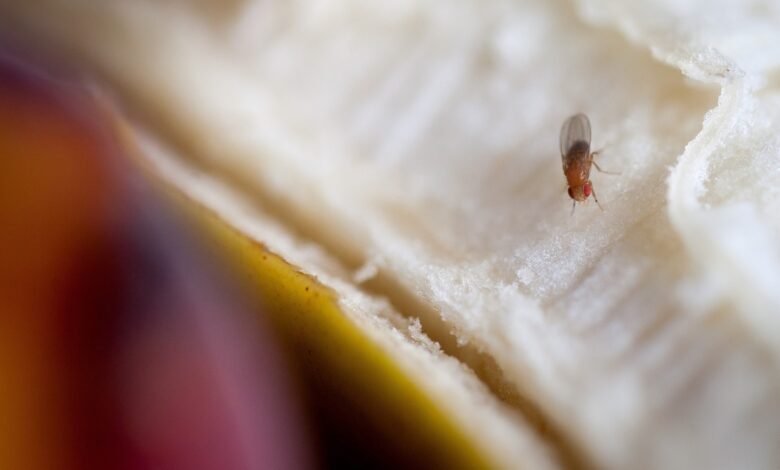Why Fruit Flies Are Smarter Than You Think

Fruit flies, or Drosophila melanogasterFruit flies are some of the most widely studied organisms because they offer a cheap and accessible platform for researching biological processes. Although they couldn’t look more different from humans, fruit flies share 75 percent of our disease-causing genes, which is why scientists have used them to better understand human diseases.
Researchers have long documented that these tiny insects use a deliberate strategy, known as launch and wave, to find food sources in windy environments. In this technique, a fruit fly smells something tasty, flies upwind to follow the scent, and then launches back and forth when it loses the scent to find it again.
Scientists have explained that picking up a scent on the wind doesn’t mean the source is nearby. Instead, the breeze likely carried the scent from some distant point. As a result, a cast-and-surge technique is an effective way to track the origin of a scent on the wind.
So what happens when there is no wind?
“They have another trick up their sleeve,” said Marcus Stensmyr, an associate professor of sensory biology at Lund University who was not involved in the study.
The trick when there’s no wind: Flies perform a sinking and circling motion. The authors found that when flies encountered and then lost an odor in still air, they spiraled downward in an attempt to find the source of the smell.
This behavior may not be shocking—most cartoon depictions of flies show them circling a stinky mound of food. However, this is the first time scientists have documented how fruit flies behave in still-air environments, confirming a long-held human intuition.
In still air, smelling a scent indicates that the source is likely nearby, making a circling and sinking approach more useful.
Some researchers have proposed that dogs and rats exhibit similar behaviors when sniffing high and low to detect a scent.
To conduct their study, the authors first had to figure out a way to activate a fly’s sense of smell in a windless environment. But how do you transmit odors without wind? David Stupski, the study’s lead author and a postdoctoral researcher in biology and engineering at the University of Nevada, Reno, described the scientists’ approach as “a virtual reality for the sense of smell”.
They used genetically modified flies that had light-activated neurons in their antennae, which are essentially a fly’s nose. As a result, the authors were able to trigger a fly’s sense of smell using red flashes of light instead of actual odors. The light-based approach allowed the researchers to bypass the difficulty associated with delivering controlled odor clouds, which are difficult to localize in space.
The authors could easily turn the lights on and off to provide light precisely as a surrogate for smell. The researchers conducted their study in a custom wind tunnel with 12 cameras to track a fly’s movement in three dimensions. Monitoring insects in their natural state of flight is notoriously difficult, which is why much research is done on walking flies, since their movement spans two dimensions instead of three.
After observing that fruit flies moved differently depending on air conditions, the authors deduced that they can sense both the presence and direction of wind.
“If you stick your head out the window of a car while you’re driving, can you tell if there’s a wind or not?” asked Floris van Breugel, the study’s lead researcher and an assistant professor of mechanical engineering. Detecting a gentle breeze as it moves through the air is difficult, but fruit flies are excellent at it anyway.
The authors suggest that flies slow down and turn when they smell an odor to determine if there is wind and where it is coming from.
“This is a pretty complex computation that’s happening in this super-small — supposedly simple — brain,” said Elizabeth Hong, a professor of neuroscience at the California Institute of Technology who was not involved in the study.
According to Richard Benton, a professor at the University of Lausanne with expertise in neurobiology, understanding how fruit flies track scents could help scientists better understand harmful pests like mosquitoes. Scientists are particularly interested in inhibiting mosquitoes’ ability to find and feed on humans to limit disease transmission.
The flies’ sense of smell could also inform the next generation of tracking devices designed to find the source of an indoor chemical leak.
Perhaps this study can earn some respect for fruit flies. After all, they’ve figured out how to thrive alongside humans by tracking scents inside our draft-free homes.
“They have a tiny brain,” Benton said, “but they do a lot with it.”




